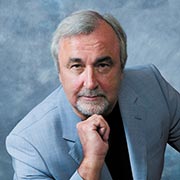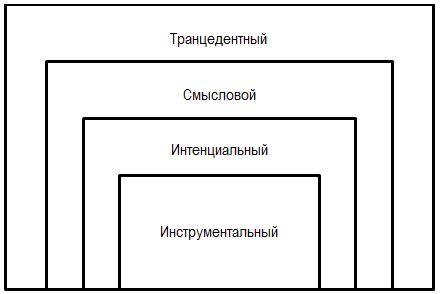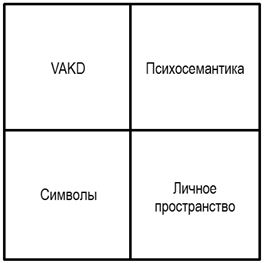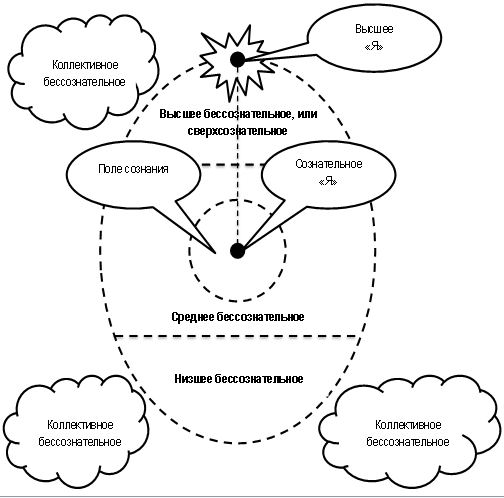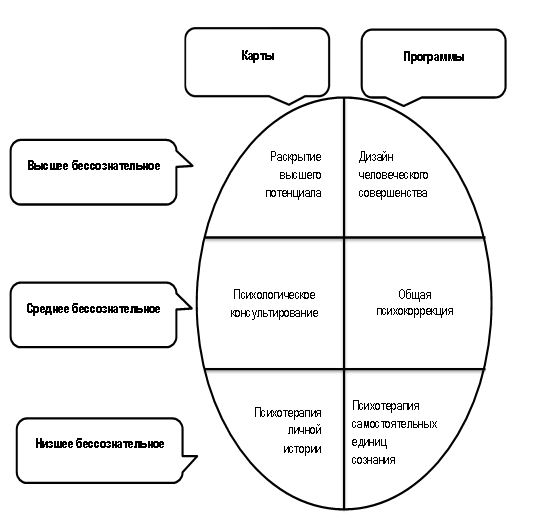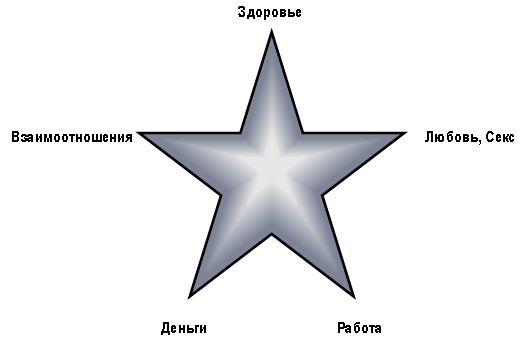This article offers an insight into the formation and development of a new discipline in the Russian psychotherapy in a broad sense of the word (psychotherapy) that is referred to as Integral Neuro-Programming. Sensu lato, psychotherapy, in its turn, basically constitutes a representation of all conceivable levels of psychotherapeutic assistance, if not all of its research areas.
Naturally, the introduction into the scientific domain of any research area claiming theoretical and practical novelty requires a thorough review of the question: what does this novelty relate to and what does it represent? If fact, it needs to be established whether it creates a situation “where distinctions are drawn and difference can be a cause” (G. Bateson). And if does, then what particular difference does it make?
Let’s start with the exploration of the term “Integral Neuro-Programming” itself. The term Integral Neuro-Programming in a most general sense implies the psychotherapeutic practice relying on the use of maps and programs for the human psyche involving neuronet codes as well as human life representative and such other experience. Although a description of this approach was offered by us in several books (/4/; /5/; /6/ etc.), we need to explain that in this case we are dealing with a transboundary discipline that integrates inputs from definitive neurophysiology and a fairly abstract psychology. It is a certain medium area lying in-between. It seems that the most illustrative analogy allowing us not to avoid protracted theorization (totally undesirable for such a compact article) would be to compare this approach to dealing with computer programs, which cannot be reduced to either final images displayed on screen (final psychology) or the movement of electric charge carries within a micro circuit (original physiology).
It is more difficult – but only superficially – to convey the meaning attached to the term “integral”. The point is that in connection with an overriding tendency to create system models that has been in evidence recently, it has been trendy (and apparently the trend has been conspicuously manifested) to use the words “integrative” and “integral” to denote various research areas and modality in psychotherapy. So, to avoid any misunderstanding and/or misinterpretation, we would like to specify now that the term “Integral” is used by us in a meaning attached to it in modern science by a well-known author Ken Wilber (/9/; /10/; /11/ etc.). As is known, the integral approach developed by this author is an approach to the man, society and science embracing all fields of human endeavour and implemented within the framework of systematic holistic philosophy /3/. To be more precise, the term “Integral” as used in this case means a striving to synthesize into a single model (sometimes a fairly complicated one at that) all the methods and theories that have proven their adequacy under certain identifiable contexts, at the same time breaking away from either crude or fine reductionism. The essence of such an approach is vividly depicted in the AQAL integral model by Ken Wilber, which literally stands for All Quadrants All Levels of analysis.
Certainly, for the purpose of Integral Neuro-Programming we do not seek to attain the comprehensive scale of Ken Wilber’s doctrine (not always thoroughly substantiated by him). However, many years of theoretic research and our dedicated, sometimes energy-sapping psycho-theoretical practice have led us to the development of an Integral Psychotherapy model which can be presented by a system of quadrants, as used by the above author.
The first (and the principal) one has been derived from the analysis of our practice. It has also given rise to addressing the issue which is not very popular among the psychotherapeutic practitioners: what is the aim and subject matter of psychotherapy? As a matter of fact, the long-term analysis of our clients has allowed us to distinctly differentiate four groups of clients. Those who wish only to eliminate certain concrete (and acute) problems related to their own life support and survival. Those who wish to be provided with certain solutions regarding the improvement of their life sustenance in all its major segments. Those who wish to understand and give meaning to, and possibly, radically change their life pattern that has been shaped over the years, but still has not been satisfactory to them. And those who wish to step outside the (life) boundaries in order to overcome their own selves as well as the boundaries of a given reality. It should be noted that already at the initial stage of formation and development of Integral Neuro-Programming (well before the first mention of this terms was made), proceeding from the theories for socializing modern psychology, presuppositions of the 1990 Strasbourg Declaration and also McWhinney’s theory of mentality types /17/ and ideas of evolutionary morphology by Academic A. Severtsev /8/, we have assumed that this phenomenon is related to three aspects. The level of the man’s social growth (pre-social, social, post-social and over-social in our interpretation).The instruments of his gradual adaptation to life activities (rules and regulation, logic and facts, feelings and values, ideas and opportunities). And the methods of this same adaptation (degradation, intensification, specialization and development). However, everything appeared to be more complicated and more interesting. And although it is not possible to describe even a slight portion of what has been discovered by us in a brief survey, we will try to shed some light on some of the most significant points.
First, it has been revealed that we have been literally confronted with a phenomenon of life levels given a consecutive development of its four stages: Instrumental, Intentional, Semantic and Transcendental. They were all vividly, but not exactly in their entirety and not quite accurately, depicted in a famous Parable of the Three Stonecutters. Because, at the first stage of his life activities, a man needs only such instruments that would help him to be better adapted to life (“I am doing the best job of stonecutting in the entire country”). At the second stage, he wants to gratify his intentions in the best possible way (“I am making a living”). And at the third stage, he endeavours to grasp the essence and implement the idea behind the ongoing process (“I am building a cathedral”). At the fourth stage, which is not lacking in the above Parable, he is longing to go beyond the boundaries of his own self and his life (“in order to learn what lies ahead” – a somewhat arbitrary and intentionally laconic ending of the Parable in keeping with the spirit of Carl Gustav Jung’s Four Archetypes). Second, it appears that proceeding from the above, the subject matter of psychotherapy at each of these levels is an absolutely different aspect of human existence. The primary problems of life sustenance. Socialization in its classic representation. Review and drastic improvement of our own life. And, eventually, we step out of our own mind, out of our own body. Conceptually, it correlates with the idea of four navigation perspectives valid for any holon advanced by Ken Wilber /10/: disintegration, self-organization, invoking interactions and transcending. It can even allow us to assert the existence of four goals for psychotherapy. To counteract disintegration and degradation. To ensure inner and external self-organization and to facilitate a further intensification of vital life functions. To create conditions that are conducive to the conceptualization of being, likewise to a certain specialization and optimization of relationships with oneself, others and the world (the sense, as is well known from psychology, is a personal understanding of any phenomenon by a man /15/). And the arrangement of possibilities for transcending oneself beyond the boundaries of this reality.
Third, it turns out that all the existing psychotherapy varieties can be subdivided into instrumental (e.g. NLP – Neurolinguistic Programming), Intentional (e.g. transactional analysis), semantic (e.g. psychoanalysis) and transcendental (e.g. transpersonal psychology). Although this classification is essentially tentative, it is apparent however that the ultimate effectiveness likewise genuine comprehensiveness of any sector of psychotherapy is determined by the degree it incorporates “all the levels and all the perspectives” of working with a man. And, by way of example, the current problems faced by modern NLP and NLPt, who are undergoing a difficult period throughout their history, stem from the reality that the brilliant instrumental level of these research areas was supported neither intentionally, nor semantically, nor even transcendentally. At the same time, the widely acknowledged problems in the development of psychoanalysis are related to the fact that despite it is a brilliant discipline, although a relatively off-the beaten track semantic psychotherapy, it has not been successful in presenting its own instrumentality, intentionality, let alone transcendental nature.
Accordingly, precisely in this context, (and also due to many reasons not set out hereunder), we have endeavoured to create a sector in psychotherapy which would allow to solve all the four tasks facing the human vital life sustenance, representing at the same time all the research areas and levels of psychotherapy. The work has been under way for the recent thirty years, and it has consistently dealt with the implementation of what is currently referred to by us as the Matryoshka of Psychotherapy Levels (Chart 1). In other words, it has been dedicated to the development of systematic theory and practice “from the bottom upwards”: from the instrumental to transcendental level through the intentional and semantic ones. We will provide an outline of our work over many years of research.
This article offers an insight into the formation and development of a new discipline in the Russian psychotherapy in a broad sense of the word (psychotherapy) that is referred to as Integral Neuro-Programming. Sensu lato, psychotherapy, in its turn, basically constitutes a representation of all conceivable levels of psychotherapeutic assistance, if not all of its research areas.
Naturally, the introduction into the scientific domain of any research area claiming theoretical and practical novelty requires a thorough review of the question: what does this novelty relate to and what does it represent? If fact, it needs to be established whether it creates a situation “where distinctions are drawn and difference can be a cause” (G. Bateson). And if does, then what particular difference does it make?
Let’s start with the exploration of the term “Integral Neuro-Programming” itself. The term Integral Neuro-Programming in a most general sense implies the psychotherapeutic practice relying on the use of maps and programs for the human psyche involving neuronet codes as well as human life representative and such other experience. Although a description of this approach was offered by us in several books (/4/; /5/; /6/ etc.), we need to explain that in this case we are dealing with a transboundary discipline that integrates inputs from definitive neurophysiology and a fairly abstract psychology. It is a certain medium area lying in-between. It seems that the most illustrative analogy allowing us not to avoid protracted theorization (totally undesirable for such a compact article) would be to compare this approach to dealing with computer programs, which cannot be reduced to either final images displayed on screen (final psychology) or the movement of electric charge carries within a micro circuit (original physiology).
It is more difficult – but only superficially – to convey the meaning attached to the term “integral”. The point is that in connection with an overriding tendency to create system models that has been in evidence recently, it has been trendy (and apparently the trend has been conspicuously manifested) to use the words “integrative” and “integral” to denote various research areas and modality in psychotherapy. So, to avoid any misunderstanding and/or misinterpretation, we would like to specify now that the term “Integral” is used by us in a meaning attached to it in modern science by a well-known author Ken Wilber (/9/; /10/; /11/ etc.). As is known, the integral approach developed by this author is an approach to the man, society and science embracing all fields of human endeavour and implemented within the framework of systematic holistic philosophy /3/. To be more precise, the term “Integral” as used in this case means a striving to synthesize into a single model (sometimes a fairly complicated one at that) all the methods and theories that have proven their adequacy under certain identifiable contexts, at the same time breaking away from either crude or fine reductionism. The essence of such an approach is vividly depicted in the AQAL integral model by Ken Wilber, which literally stands for All Quadrants All Levels of analysis.
Certainly, for the purpose of Integral Neuro-Programming we do not seek to attain the comprehensive scale of Ken Wilber’s doctrine (not always thoroughly substantiated by him). However, many years of theoretic research and our dedicated, sometimes energy-sapping psycho-theoretical practice have led us to the development of an Integral Psychotherapy model which can be presented by a system of quadrants, as used by the above author.
The first (and the principal) one has been derived from the analysis of our practice. It has also given rise to addressing the issue which is not very popular among the psychotherapeutic practitioners: what is the aim and subject matter of psychotherapy? As a matter of fact, the long-term analysis of our clients has allowed us to distinctly differentiate four groups of clients. Those who wish only to eliminate certain concrete (and acute) problems related to their own life support and survival. Those who wish to be provided with certain solutions regarding the improvement of their life sustenance in all its major segments. Those who wish to understand and give meaning to, and possibly, radically change their life pattern that has been shaped over the years, but still has not been satisfactory to them. And those who wish to step outside the (life) boundaries in order to overcome their own selves as well as the boundaries of a given reality. It should be noted that already at the initial stage of formation and development of Integral Neuro-Programming (well before the first mention of this terms was made), proceeding from the theories for socializing modern psychology, presuppositions of the 1990 Strasbourg Declaration and also McWhinney’s theory of mentality types /17/ and ideas of evolutionary morphology by Academic A. Severtsev /8/, we have assumed that this phenomenon is related to three aspects. The level of the man’s social growth (pre-social, social, post-social and over-social in our interpretation).The instruments of his gradual adaptation to life activities (rules and regulation, logic and facts, feelings and values, ideas and opportunities). And the methods of this same adaptation (degradation, intensification, specialization and development). However, everything appeared to be more complicated and more interesting. And although it is not possible to describe even a slight portion of what has been discovered by us in a brief survey, we will try to shed some light on some of the most significant points.
First, it has been revealed that we have been literally confronted with a phenomenon of life levels given a consecutive development of its four stages: Instrumental, Intentional, Semantic and Transcendental. They were all vividly, but not exactly in their entirety and not quite accurately, depicted in a famous Parable of the Three Stonecutters. Because, at the first stage of his life activities, a man needs only such instruments that would help him to be better adapted to life (“I am doing the best job of stonecutting in the entire country”). At the second stage, he wants to gratify his intentions in the best possible way (“I am making a living”). And at the third stage, he endeavours to grasp the essence and implement the idea behind the ongoing process (“I am building a cathedral”). At the fourth stage, which is not lacking in the above Parable, he is longing to go beyond the boundaries of his own self and his life (“in order to learn what lies ahead” – a somewhat arbitrary and intentionally laconic ending of the Parable in keeping with the spirit of Carl Gustav Jung’s Four Archetypes). Second, it appears that proceeding from the above, the subject matter of psychotherapy at each of these levels is an absolutely different aspect of human existence. The primary problems of life sustenance. Socialization in its classic representation. Review and drastic improvement of our own life. And, eventually, we step out of our own mind, out of our own body. Conceptually, it correlates with the idea of four navigation perspectives valid for any holon advanced by Ken Wilber /10/: disintegration, self-organization, invoking interactions and transcending. It can even allow us to assert the existence of four goals for psychotherapy. To counteract disintegration and degradation. To ensure inner and external self-organization and to facilitate a further intensification of vital life functions. To create conditions that are conducive to the conceptualization of being, likewise to a certain specialization and optimization of relationships with oneself, others and the world (the sense, as is well known from psychology, is a personal understanding of any phenomenon by a man /15/). And the arrangement of possibilities for transcending oneself beyond the boundaries of this reality.
Third, it turns out that all the existing psychotherapy varieties can be subdivided into instrumental (e.g. NLP – Neurolinguistic Programming), Intentional (e.g. transactional analysis), semantic (e.g. psychoanalysis) and transcendental (e.g. transpersonal psychology). Although this classification is essentially tentative, it is apparent however that the ultimate effectiveness likewise genuine comprehensiveness of any sector of psychotherapy is determined by the degree it incorporates “all the levels and all the perspectives” of working with a man. And, by way of example, the current problems faced by modern NLP and NLPt, who are undergoing a difficult period throughout their history, stem from the reality that the brilliant instrumental level of these research areas was supported neither intentionally, nor semantically, nor even transcendentally. At the same time, the widely acknowledged problems in the development of psychoanalysis are related to the fact that despite it is a brilliant discipline, although a relatively off-the beaten track semantic psychotherapy, it has not been successful in presenting its own instrumentality, intentionality, let alone transcendental nature.
Accordingly, precisely in this context, (and also due to many reasons not set out hereunder), we have endeavoured to create a sector in psychotherapy which would allow to solve all the four tasks facing the human vital life sustenance, representing at the same time all the research areas and levels of psychotherapy. The work has been under way for the recent thirty years, and it has consistently dealt with the implementation of what is currently referred to by us as the Matryoshka of Psychotherapy Levels (Chart 1). In other words, it has been dedicated to the development of systematic theory and practice “from the bottom upwards”: from the instrumental to transcendental level through the intentional and semantic ones. We will provide an outline of our work over many years of research.
The creation of the Instrumental level or aspect of Integral Neuro-Programming required the solution of many methodological, procedural and even strictly technical problems. However, it enabled us to implement and realize some key decisions and we are going to mention only three of them.
First, in the course of our practical work and subsequent research we managed to integrate the existing variety of opinions in psychotherapy as regards the codes representing the subjective and its problems. As is common knowledge, the NLP and NLPt adherents traditionally tend to assert that the perception modalities should be attributed to the above: V (visual); A (audio); K (kinaesthetic) and D (discrete digital). Conventional psychotherapists pertaining to the psychological research area generally deal with the verbal output, with its psychosemantics. Those who represent the communities of systemized and structural arrangements deal with such a peculiar aspect of human experience representation as the location in space (although, in truth and in fact, the characteristics of space code in its strictly theoretical and methodological context are much better reflected in the work by Lucas Derks entitled Social Panoramas /16/. Apart from that, a whole constellation of experts that belong to diverse research areas in psychotherapy make extensive use of a so-called symbolic (or metaphoric, in its verbal modification) code. At the same time, as has been noted by many researchers, there exists a certain orientation to this or that code in the clients, which is in many cases not related to the traditional psychological characteristics. While creating an Instrumental level for the Integral Neuro-Programming, we actually summed up two and two and concluded that we are dealing with four non-equivalent ways of Reality mapping (Chart 2).
Their use by a man noticeably correlates to his growth level in the context of four stages identified by us: presocial, social, postsocial and oversocial. Second, we managed to design a relatively rational and easily defined classification for the structure of methods in use. We based this classification on two criteria. The model of human psyche suggested by Roberto Assagioli /1/ (which has never been demolished or refuted by anyone to date), including such levels as the Lower, Middle and Higher Unconscious (Chart 3).
And also, a conspicuously traceable tendency of the methods used in psychotherapy and practical psychology to be oriented or targeted towards working with either human psyche maps or programs (incidentally, this rather liberal, but realistic subdivision provides an explanation for the well-known concept involving the Thinker and the Prover devised by Dr. Leonard Orr (pursuant to /13/), whereby the Thinker corresponds to Maps and the Prover corresponds to Programs). As a result, we have generated the model as presented below (Chart 4).
Regardless of its tentative nature that we are keenly aware of, the model has proven to be very efficient in handling methodological, procedural and even strictly psycho-technological issues.
Third, drawing on the postulate that all systematic phenomena can be modified only at the expense of systematic change (and a man is probably the most complicated system in the Universe), that has naturally arisen out of the General Systems Theory, we have developed one of the first algorithmic and distinctly consistent systems for working with problems pertinent to any aetiology, including psychosomatic. The so-called General or Full Module allows to carry out the optimization of the human condition within the context of serious pathologies related to the syndrome-based nature, accountable for the man’s undersocialization and desadaptation in various systems of social relationships, for a relatively limited time (not more than 20 therapeutic hours). However, it should be noted that we are dealing precisely with the algorithm-based and stringently consistent system of psychotechnologies. It lends itself easily to reproduction by a psychotherapist and/or psychologist of any level of qualification, yet it permits to achieve positive changes not only in the man’s psyche, but also in his life and fate. This outrageously bold statement has been corroborated by the practical work of hundreds of psychotherapists, who underwent training at our Institute of Innovative Psychotechnologies, as well as by successful operation of the Centre for Practical Psychotherapy established under the auspices of the Institute. Essentially, the completion of a series of research focusing on the development of an Instrumental level of the Integral Neuro-Programming has quite unexpectedly created a number of serious challenges relating to the Intentional level. For instance, the mere question of what to do next and what steps to take after the deproblematization of the client was resolved, first, by practical psychology rather than by psychotherapy, and, second, using a dual approach involving diametrically different tools. In classical psychology, it was contemplated continue or complete the socialization of an individual, at most, whereas in pragmatically inclined behavioural disciplines, it was openly proclaimed that it was required to attain success through achieving supremacy. We were not satisfied with either the first or the second version of the post-problem level of psychotherapy in the least. Because, again, the subject of socialization in psychology remained non-clarified and was ostensibly removed from the domain of individual human life (as it was totally unclear what were the implications of a successful socialization for an individual, not for society – i.e. what it is represented by for him). Meanwhile, the orientation towards supremacy for the sake of success as such was merely leading us to an impasse, as David G. Myers /18/ showed that the implementation of a traditional success model gave little to a man, and the supremacy as such was not in all cases culminated even by social recognition. That is why we have built an Intentional level of Integral Neuro-Programming on the three pillars or three logical premises listed below.
In accordance with the first premise, the genuine individualized evidence of successful socialization of a person does not lie in his success (accidental more often than not and poorly deserved), but his well-being. The latter, in its turn, should mandatorily include “two wings” of life sustenance: effectiveness and happiness (Substantive-cum-Instrumental and Socio-Expressive aspects). At the same time, it appears that happiness is based on the quality standard underlying the individual Model of the World, or the maps that make it up; whereas the effectiveness is determined by the productiveness of programs used with this aim in view. However, all maps and programs of human psyche are located at all levels of the Unconscious, and maps are primary and causative factors in relation to the programs (although the latter ones possess a certain degree of independence).
In accordance with the second premise, the human well-being can be represented both in its entirety as well as through the use of its separate segments. We have identified such segments – basic and original – in the well-known Wellbeing Star diagram (see Chart 5) as health (spiritual, moral, psychological and physical); common relationships with other people, love and sex, as the most intimate forms of relationships, work, as the principal field of self-actualization of a man, as well material wellbeing, as rather a questionable standard of a man’s social successfulness and his significance, to a certain extent. Consequently, it has been possible (and this possibility has been realized) for us to carry out Intentional psychotherapy, relying not on medical and/or psychological diagnoses, but purely on subjective or objective assessment of a man’s effectiveness and happiness (his wellbeing) within the segments identified by us.
However, our efforts have helped us to understand that the algorithms and methods of Instrumental psychotherapeutic assistance can be applicable to the work at the Intentional level only to a limited degree. As a result (third premise), we have developed so-called specialized modules. Algorithmic systems of psychotechnologies for achieving optimal weight, gaining health, increasing the quality of love and sex, improving work and working environment, as well as improving material wellbeing. Currently, these modules have not only been used for working at the Instrumental level of psychotherapy, but have been taught within the framework of professional training as part of the curriculum entitled Personal Wellbeing Expert offered by out Institute.
Nevertheless, in a while it was apparent to us that the purpose of human life cannot be neither equated nor reduced to successful socialization. Multiple requests made by highly-socialized clients, who were totally dissatisfied with their life, raised the question of content of the genuinely semantic level of psychotherapy, which is only partially dealt with in the psychotherapy advanced by Viktor Frankl /14/. At this point, we realized that we have the full right to talk about a peculiar ability to perform effective life functions – vitality. Moreover, this model suggested by Russian author V. Volchenko /2/ (frankly speaking, in a slightly different interpretation) allows to consider the phenomenon as a quotient obtained when the Information accumulated and simultaneously used by any system (in our case, by a man) is divided by the Energy required by the system for being maintained in an operational condition: V=I?E . Nevertheless, it can also be represented as a ratio (fraction) between the individual’s happiness (term of fraction) and its non-effectiveness (denominator), or given the above wellbeing interpretations, as a quotient obtained when the quality of maps is divided by the productiveness of programs (the latter ones should appear with a minus notation “-” here).
Second, it was obvious that the socialization spans only one period of human life: the one that is purely social in the sense of a man’s non-gratuitous service to society. But, the second period is left behind: the one which is strictly existential and that can be conveyed through an official doctrine of survival only to a very tiny degree. At the same time, we do not conceal that there is nothing new in such a dichotomy, as the ideas about living for society and for oneself, idealization and self-actualization, survival and life as such (etc.) have been expressed by representatives of the science community. However, they are accepted and understood by us here in Russia not as two aspects or avenues of human life, but as two absolutely consecutive periods of human life… Simultaneously, we have developed a concept of four phases of human life functions that provide for the implementation of the above two stages, which allowed us to holistically and systematically describe the most diverse aspects and phenomena as components of one and the same entire and consecutive process (see /7/).
Third, we have tested some Integral models that allow to easily represent and change the parameters of human existence as the tools of semantic psychotherapy. The Cycle of Being which permits to unfold the content of any life stage through the levels of having, doing, knowing, interrelating and being. SK-Russian Matryoshka (in this case, a working title became commonly used by chance) which permitted to implement these stages in terms of meta-goals, principles, target relationships, rapport, information, actions as well as preferences and skills. Neuro-logical levels that facilitate the implementation of inner and external representation of life functions in the context of environment, behaviour, abilities, intentions, values, convictions, identity, Mission and Meaning. A thoroughly formulated result, representing any tactical life task involving the criteria underlying the goal, features, conditions, resources, restrictions, motivation and value. And a purely Instrumental and very important model “Mercedes-SK” which can model the present and the desirable at a new stage of life sustenance in the context of reactions and attitudes to the environment, conditions, types and forms of behaviour, convictions and Self Images. Currently, the Semantic level of psychotherapy, which has been referred to as Existential programming, is actively used for the purpose of dramatic improvement of life functions and the creation of the life purposes for highly socialized clients, it is also taught at the Institute under the Master program.
Nevertheless , the development of Integral Neuro-Programming has not ceased at this point. Because the question about the fourth level of psychotherapy – Transcendental has remained open. This matter was previously considered by us in a certain utilitarian context of psychotherapeutic treatment of the so-called terminal states: elderly people, people diagnosed with uncurable diseases or experiencing loss of interest and new prospects in their lives. However, in the process of working with the issues mentioned above we realized that we came across something far beyond our most serious expectations.
First, we have developed several standardized modules pertinent to the category of designing human perfection and targeting the attainment of goals outside the boundaries of common human abilities incorporated within the four extensive classes. Working with data files. Using specific energies. Performing fine interacting. And implementing some rather exotic phenomena, precognition type etc.
Second, we have developed three systems of working with the so-called objective reality (its optimization and improvement): Structural, based on concepts of Social and Spiritual panorama (in other words, Microcosmic Diarama). Content-related, oriented towards interaction and work with holons belonging to the level above human. And Dynamic, related to the so-called Reality Vectors.
Third, we have approached very closely the development of methodology, methods and psychotechnologies for the acquisition of Cosmic Consciousness based on five principles advanced by Kim Wilber /12/. Abandoning conceptualization. Destroying the subject of objectiveness. Accepting “Here and Now” as the sole givenness. Extending “Self”. And implementing universal unconditioned love.
In brief, these are the basic results, ideas and premises we would like to share with the international psychotherapeutic community. You can learn more about the Integral Neuro-Programming from the comprehensive monograph entitled “Existence Programming” (Moscow, “Your Books”, 2014), and also on the website of the Institute of Innovative Psychotechnologies and Centre for Practical Psychotherapy (www.psy-in.ru).
Список литературы
- Roberto Assagioli "Psychosynthesis: Theory and Practice. From Mental Crisis to the Higher Self". Series: Library of Psychological Literature, Moscow: REFL-book; 1994.
- V. Volchenko "World Outlook and Eco-ethics of the 21st Century", Science - Philosophy - Religion, Moscow, MGTU named after N.E. Bauman Publishers, 2001.
- Integral Approach. Wikipedia - Free Encyclopaedia [Electronic Resource] - http://wikipedia.org.
- S. Kovalyov "Successful Fate Neuro-Programming", Moscow, Profit-Style, 2008.
- S. Kovalyov "Introduction to Neuro-Transforming", Moscow, Profit-Style, 2009.
- S. Kovalyov "Team Belonging to Our Self", Moscow, Your Books, 2011.
- S. Kovalyov "How to Live in Order to Live", Moscow, Your Books, 2013.
- A. Severtsev "Morphological Laws of Evolution", Moscow, USSR Academy of Sciences Publishing House, 1939.
- Ken Wilber "Integral Psychology", Moscow, ACT, 2004.
- Ken Wilber "Brief History of Everything", Moscow, ACT, 2006.
- Ken Wilber "Integral Vision", Moscow, Otkryty Mir, 2009.
- Ken Wilber "Five Reasons Why You Are Not Enlightened. (And Five Ways to Recognize that You Already Are!)", Audio-lecture, Silencio Production, 2012.
- Glenn Wilson "Evolutionary Psychology", Janus, Sophia, 1998.
- Viktor Frankl "Search for Meaning", Collected Volume, Moscow, Progress, 1990.
- Great Encyclopaedia of Psychology, Moscow, Exmo, 2007.
- Lucas Derks "Social Panoramas. Changing the Unconscious Landscape with NLP and Psychotherapy", Crown House Publishing, 2005.
- Will McWhinney "Paths of Change: Strategic Choices for Organizations and Society", London, Sage Publication, 1997.
- David G. Myers "The Pursuit of Happiness", NY, Avon, 1992.
Другие статьи
Эксклюзивные права на все материалы сайта psy-in.ru принадлежат Институту Инновационных Психотехнологий. При цитировании и использовании материалов ссылка на автора и Институт Инновационных Психотехнологий обязательна. Подробнее

